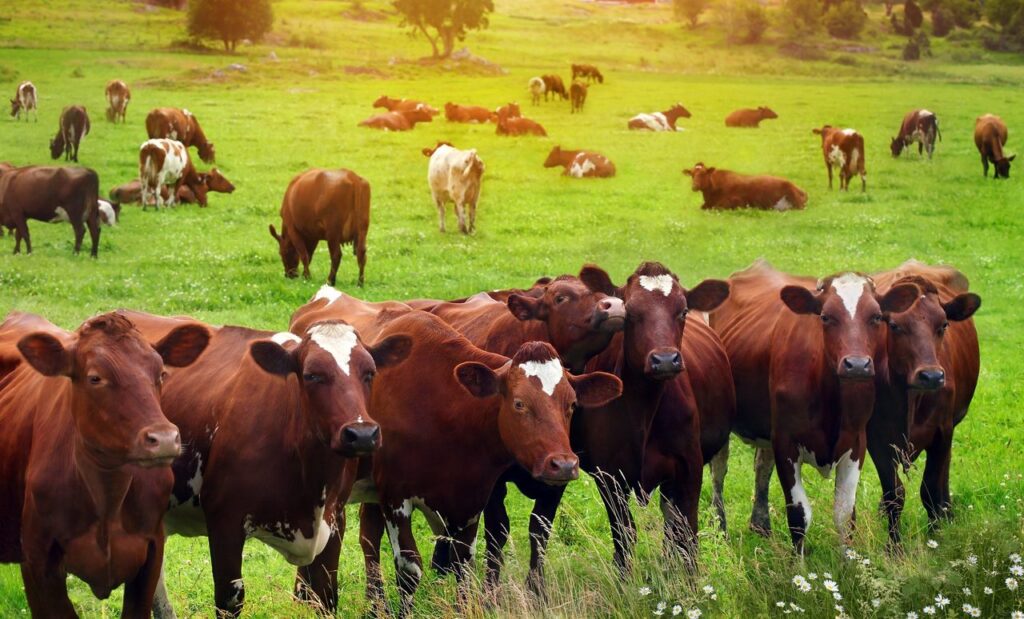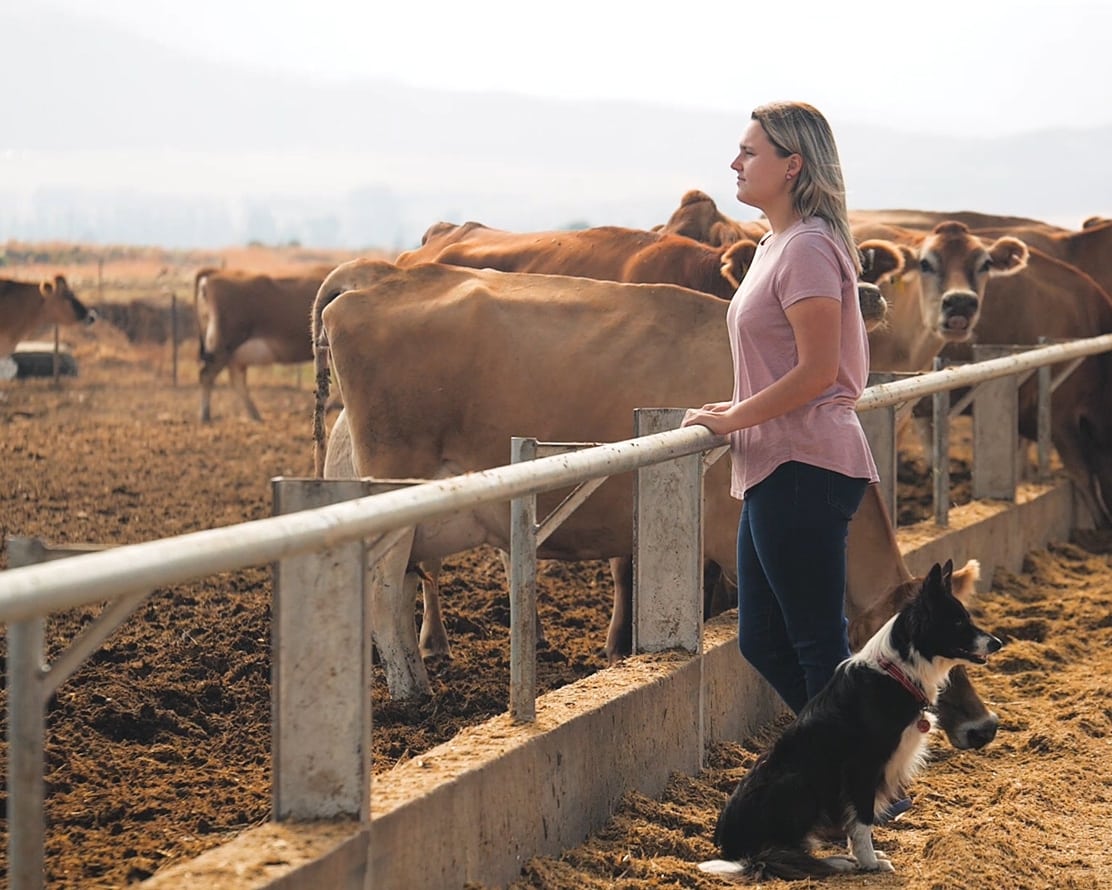Introduction
Cattle farming stands as one of the oldest and most lucrative agricultural ventures, particularly in South Africa where the industry thrives. From providing meat and dairy products to generating additional income through breeding and selling livestock, cattle farming offer diverse opportunities for entrepreneurs keen on tapping into the agricultural sector.
If you’re considering embarking on this rewarding journey, here’s a step-by-step guide on how to start a cattle farming business in South Africa:
1. Conduct Thorough Research

Begin by thoroughly researching various aspects of the cattle farming industry before taking the plunge. Delve into understanding the nuances of different cattle breeds that thrive in South African climates encompassing factors such as adaptability, disease resistance, and market demand. Some popular breeds are Nguni, Afrikaner, Tuli, Angus, Hereford, Sussex, Charolais, Braunvieh, Pinzgauer and Brahman.
Familiarize yourself with essential breeding and husbandry practices, ensuring you’re equipped with the knowledge to maintain optimal herd health and productivity. Dive into analyzing market trends and consumer preferences for beef and dairy products, identifying lucrative opportunities and potential challenges.
Moreover, take the time to acquaint yourself with the regulatory landscape, ensuring compliance with pertinent regulations and acquiring necessary permits to operate your farm legally and ethically.
2. Develop a Business Plan:
Forge ahead by crafting a meticulous business plan that will serve as the guiding compass for your cattle farming endeavors. In this comprehensive blueprint, articulate your overarching business objectives, delineate your target market demographics, and outline detailed production strategies to ensure operational efficiency.
Delve into the financial realm by projecting revenue streams, estimating expenses, and conducting a thorough cost-benefit analysis. Consider crucial factors such as land acquisition or leasing, detailing plans for infrastructure development encompassing fencing, housing, and water supply systems.
Elaborate on your strategies for feed and nutrition management, emphasizing sustainable practices that prioritize the health and welfare of your livestock. Additionally, outline protocols for veterinary care, implementing a robust health management program to safeguard the well-being of your cattle.
3. Secure Adequate Land and Resources
Take proactive steps to secure the necessary land and resources vital for laying the foundation of a prosperous cattle farming operation. Start by meticulously assessing potential land parcels to ensure they are ideally situated for cattle farming, boasting ample grazing pastures and reliable access to water sources.
Prioritize locations with favorable climate conditions conducive to livestock rearing, mitigating potential challenges and optimizing herd health and productivity. For dairy and beef cattle, the ideal ambient temperature is between 41°F and 77° F. Consider places such as Cape Town, Durban, Stellenbosch, and Hermanus.
Allocate resources towards essential infrastructure development, including robust fencing systems to safeguard your livestock and delineate grazing areas effectively. Additionally, invest in sturdy shelter structures to provide adequate protection from inclement weather conditions, ensuring the well-being and comfort of your cattle year-round.
Establish reliable water supply systems, incorporating innovative technologies such as boreholes or irrigation systems to guarantee a consistent and sustainable water source for your herd. By securing adequate land and resources, you set the stage for establishing a thriving cattle farm that thrives in harmony with its natural surroundings.
4. Select Appropriate Cattle Breeds
Choose cattle breeds that are tailored to thrive in the unique climate conditions and market demands of South Africa. In this diverse agricultural landscape, where varying climates and topographies prevail, selecting the right breeds is paramount for the success of your cattle farming venture.
Commonly embraced beef cattle breeds in South Africa include the robust Bonsmara, renowned for its adaptability to local climates and exceptional meat quality, as well as the Angus and Hereford, prized for their superior meat characteristics and market desirability. For dairy farming enthusiasts, the Holstein and Jersey breeds reign supreme, celebrated for their prolific milk production and exceptional dairy product quality.
Deliberate on critical factors such as climate adaptability, disease resistance, growth rates, and the desired end products—whether it be high-quality meat or abundant milk production when choosing breeds for your farm. By selecting breeds that align harmoniously with the South African environment and consumer preferences, you lay the groundwork for a thriving and sustainable cattle farming enterprise.
5. Focus on Animal Health and Welfare
Place paramount importance on the well-being and welfare of your cattle, as their health is fundamental to maximizing productivity and profitability on your farm. Establish a rigorous herd health management program that encompasses a spectrum of preventive measures, including routine vaccinations to shield your livestock from prevalent diseases, regular deworming protocols to combat internal parasites, and timely veterinary interventions to address any health concerns promptly.
Ensure your cattle receive optimal nutrition by formulating balanced diets tailored to their specific dietary requirements, supplemented with essential minerals and vitamins to support their overall health and vitality. Provide access to clean and abundant water sources, as well as mineral supplements, to maintain hydration and promote optimal growth and performance.
Uphold stringent hygiene and sanitation practices within housing facilities, implementing regular cleaning and disinfection protocols to mitigate the risk of disease transmission and ensure a hygienic living environment for your cattle. By prioritizing the health and welfare of your livestock, you foster a thriving and resilient herd that forms the cornerstone of a successful and sustainable cattle farming operation.
6. Implement Efficient Management Practices
Instill efficient management practices at every level of your cattle farming operation to enhance productivity and streamline operations. Craft meticulous feeding and grazing management strategies tailored to optimize cattle nutrition while maximizing the utilization of pasture resources. This involves rotational grazing methods to prevent overgrazing and ensure sustainable pasture regeneration, as well as implementing feeding schedules that meet the nutritional needs of your herd while minimizing feed wastage.
Implement robust record-keeping systems to meticulously track herd performance, including breeding cycles, health records, and financial transactions, enabling informed decision-making and facilitating compliance with regulatory requirements.
Additionally, prioritize on-going training and development initiatives for farm staff to equip them with the necessary skills and knowledge to execute tasks efficiently and uphold best practices in animal husbandry. By embracing efficient management practices, you not only enhance productivity and profitability but also foster a culture of sustainability and continuous improvement on your cattle farm.
7. Market Your Products
Craft innovative marketing strategies tailored to showcase your farm’s unique offerings and effectively connect with potential buyers, ensuring a profitable market presence for your cattle and related products.
Begin by establishing diverse marketing channels to effectively showcase your cattle and related products to potential buyers. Explore avenues such as direct sales to local markets, supplying to reputable abattoirs and meat processors, or forging partnerships with retail outlets and restaurants to expand your reach and tap into diverse consumer segments.
Embrace the digital realm by leveraging cutting-edge digital platforms and social media channels to amplify your farm’s visibility, engage with prospective buyers, and cultivate a loyal customer base.
Utilize captivating imagery, informative content, and interactive features to showcase the quality and uniqueness of your products, fostering authentic connections with your audience and driving sales growth.
8. Stay Informed and Adapt
Remain vigilant and adaptive in the face of the ever-evolving landscape of the agricultural industry, where trends and challenges continually shape the terrain. Stay abreast of industry developments, ranging from emerging technologies to shifting consumer preferences, by actively engaging with industry publications, attending relevant conferences, and participating in networking events.
Embrace a culture of continuous learning and improvement, investing time and resources into expanding your knowledge base and skill set to stay ahead of the curve. Be proactive in integrating innovative technologies and best practices into your operations, whether it’s adopting precision farming techniques or implementing sustainable farming practices to minimize environmental impact.
Remain agile and flexible in your approach, readily adjusting your strategies and practices to address emerging challenges and capitalize on new opportunities as they arise.
Recap
In summary, launching a cattle farming enterprise in South Africa demands meticulous planning, unwavering dedication, and steadfast perseverance. By meticulously following the steps outlined in this guide and maintaining a commitment to continual learning and adaptation, you can forge a resilient and lucrative venture that not only fulfils your entrepreneurial aspirations but also contributes to the vibrancy of the country’s agricultural sector. With careful attention to detail, a proactive mind-set, and a willingness to embrace change, you can carve out a rewarding niche in the agricultural landscape of South Africa, positioning yourself for long-term success and prosperity.


















